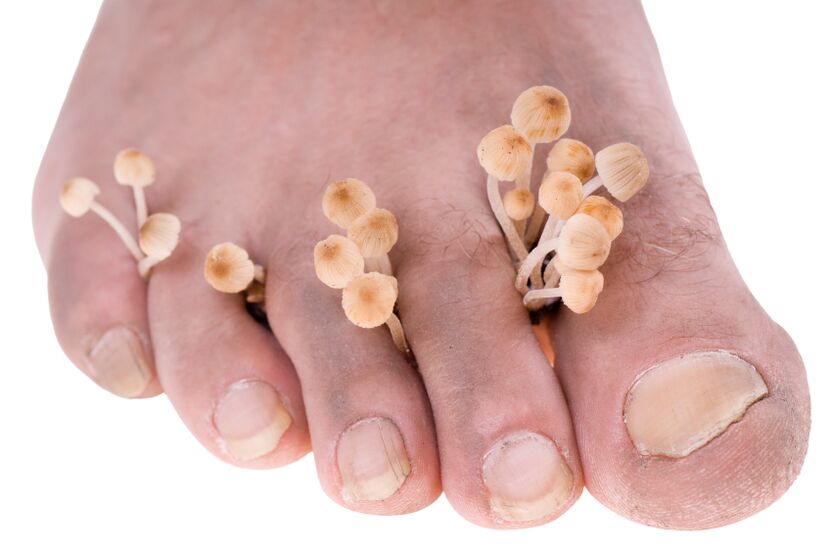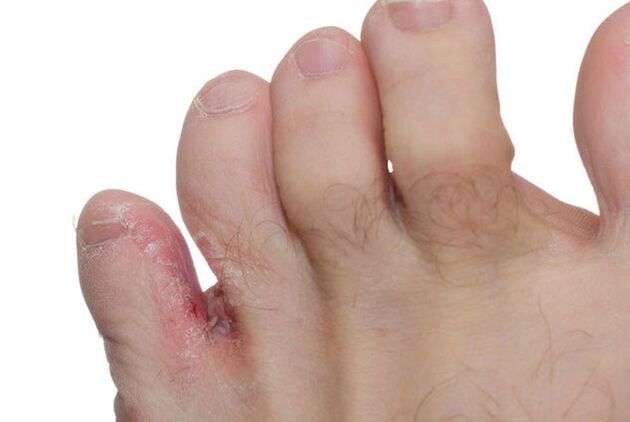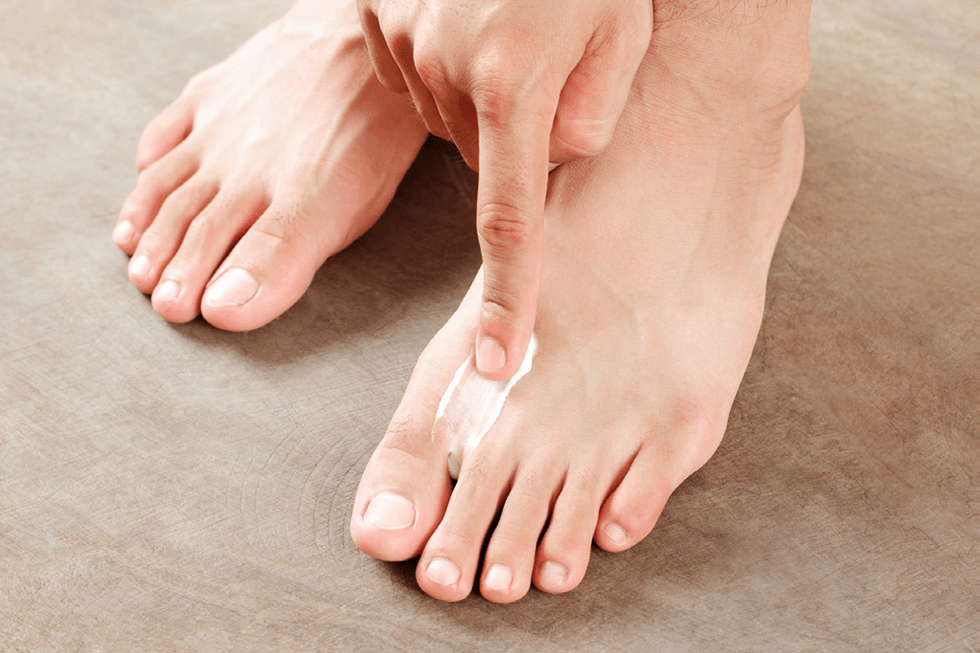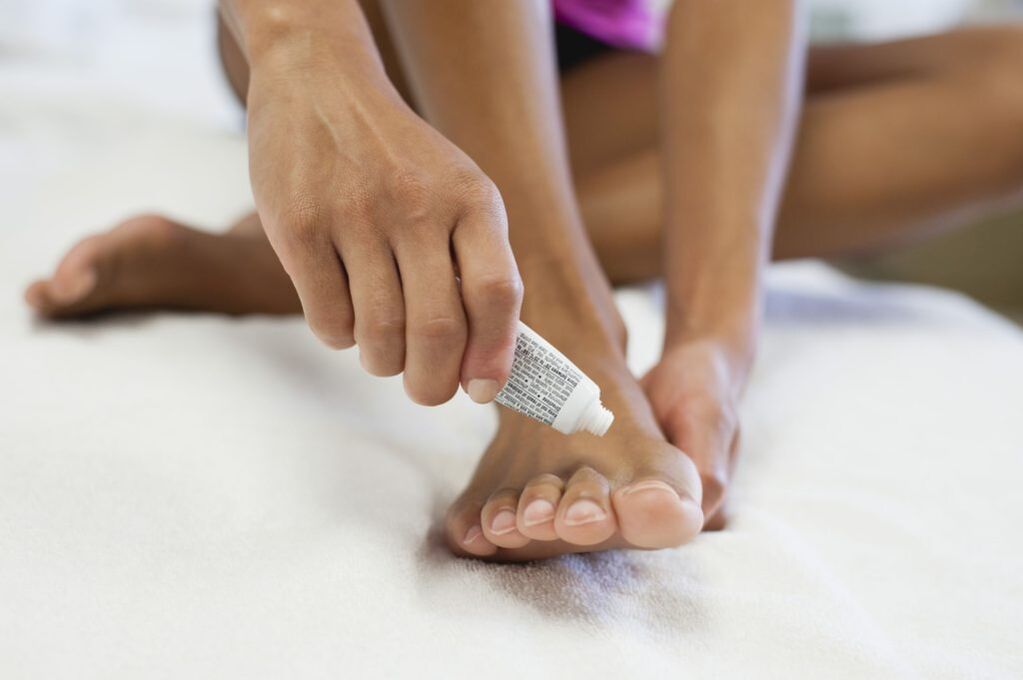Mycosis is an infectious skin disease caused by a fungus. Treatment with an antifungal cream is generally used, which gives good results, but does not last long. The tips below will help prevent toe fungus, which can return even after treatment.
Who can be infected

Almost anyone can get athlete's foot. But it is more common in people who sweat more or those who wear tight shoes and socks, which also causes excessive sweating of the feet.
Mycosis can be transmitted from person to person. For example, this could happen in a public shower used by athletes or swimmers. Small flakes of fungus-infected skin may fall off while showering. Once a small area of infection begins to develop, it usually spreads along the skin. Find out where else you can catch the fungus here.
What are the symptoms
The skin between the little toes will usually be affected first. The first signs of fungus, when the infection has just formed on the skin, are minor. The appearance will become noticeable when the rash begins to spread and the skin begins to become itchy and flaky. Cracks and inflammation will appear there. Large cracks in the skin between the toes can become larger and be very painful. Tiny flakes of infected skin will peel off.
If interdigital mycosis is left untreated, the rash will gradually spread across the entire leg. In some cases this extends to the sole. Often the infection causes scaling all over the sole and sides of the foot. Sometimes the yeast infection causes large rashes with blisters all over the sole. In this case, we are dealing with foot fungus.

Is that bad?
Generally, no. Most people are able to treat itchy toes before the infection sets in. Sometimes the infection spreads to the skin of other parts of the body. These are usually moist, airless areas, such as the groin.
As a rule, fungus, including nail fungus between the toes, does not spread deeper, but only to the surface of the skin. However, other microbes (bacteria) can enter the cracks left by neglected or untreated fungal infections. Sometimes this can cause more serious infections of the feet or legs.
It happens that the infection spreads to the nail - it can be cured. But in this case, to get rid of the fungus, you will need several weeks of taking antifungal tablets to eliminate the infection from your nails.Therefore, it is better to treat interdigital fungus on the feet in a timely manner, as soon as the first symptoms begin to appear.
Treatment of mycosis
Treating fungus between the toes usually involves the use of various antifungal creams and sprays. You can purchase topical antifungals at your local pharmacy or get one with a prescription.
To treat fungus between the toes, it is necessary to apply an antifungal agent directly to the affected area, i. e. the skin of the feet. There are different medications that help fight fungal infections.
They are usually sold as creams, but can also come in sprays, liquids and powders. These medications are very effective in eliminating fungal infections of the skin. However, there is no evidence that one remedy is better than another.For children, milder medications should be used.Other options are undecenoic acid or tolnaftate, which are only used as directed by a doctor.

During treatment, it is often the case that the inflammation seems to go away quite quickly, but you may need treatment for 1 to 2 weeks after the rash disappears. This is necessary to completely eliminate fungus on the skin, which will prevent relapses.
- Preparations containing the active ingredient clotrimazole: use 2 to 3 times a day for at least four weeks.
- Preparations containing the active ingredient miconazole nitrate: apply twice a day and continue for 10 days after the skin returns to normal.
- Preparations with the active ingredient econazole nitrate: apply twice a day until the skin returns to normal.
- Medicines from the triazole group: apply twice a day for seven days. To cure nail fungus between the toes, you should continue using the medication for a few more days if the symptoms are more severe. Not suitable for children.
- Preparations containing the active ingredient terbinafine hydrochloride: apply once or twice a day for seven days. Not suitable for children.
- Undecenoic acid preparations: apply twice a day and continue for a week after the skin returns to normal.
If you encounter this disease for the first time and do not know how to cure foot fungus and do not be mistaken in choosing a drug for treatment, consult a doctor.
For skin, especially inflamed skin, your doctor may prescribe an antifungal cream combined with a mild steroid ointment. They are generally not used for more than seven days. You may need to continue using just one antifungal cream for a while.
Anabolic steroids reduce inflammation and relieve itching and redness over a short period of time. However, the steroid does not completely eliminate toe fungus and therefore steroid cream alone should not be used for treatment.
Antifungal tablets for toenail fungus are sometimes prescribed for adults if the infection is severe and does not go away with creams. Tablets are also needed if the infection, in addition to the legs, is localized in many places on the skin.

However, this treatment for interdigital fungus is not suitable for everyone.
It is not always recommended for pregnant or breastfeeding women, or people with liver disease, to use antifungal tablets. Children generally do not receive antifungal drug treatment.
Although skin fungus between the toes can spread from person to person, you don't have to stay away from work, school, or sports if you have the fungus.However, in public places, such as a swimming pool or sauna, try to keep your feet covered until the rash disappears.Also try not to scratch the broken skin, as this may spread the infection to other areas.
The following tips can prevent recurrence of athlete's foot:
- It is necessary to wash your feet daily and dry the skin between the toes well after washing. This is perhaps the most important point. Wear socks if your feet are not completely dry. The moist skin between your fingers is a great place for fungus to grow.
- Do not share each other's towels in public locker rooms. Towels should be washed as often as possible.
- Change your socks daily. Fungi multiply in the dander of unwashed socks. Cotton socks and leather shoes are, in many ways, better than nylon socks and shoes made from artificial materials, which increase sweating.
- Try alternating different shoes every 2-3 days, this will allow each pair to dry completely after wearing it.
- Wear flip-flops or sandals in public locker rooms and showers. This prevents your feet from coming into contact with the floor, which could contain flakes of other people's skin.
- When you are at home, walk barefoot as much as possible, without shoes or socks, to allow air to reach your feet. However, this may not be practical for some.
If your athlete's foot keeps recurring, you can prevent it from recurring by regularly using one of the antifungal sprays or creams as a preventative measure. As a preventative measure, you can use various preventive creams daily.
























